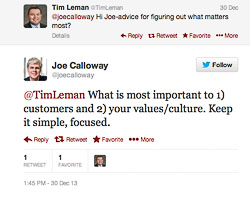 According to recent research from Protivit Inc. and North Carolina State University, loss of business income relating to specific issues (such as economic slowdown, increasing competition, legislative changes and volatile financial markets) has grown 14 percent in only 2 years, while risk management and crisis readiness have fallen 7 percent. These figures indicate that many organizations have been unable to anticipate and respond effectively to evolving business threats. By simply identifying and assessing these risks, you can protect your organization and take advantage of favorable circumstances which will help boost your bottom line. Here are the top seven risks businesses should fear most in 2014.
According to recent research from Protivit Inc. and North Carolina State University, loss of business income relating to specific issues (such as economic slowdown, increasing competition, legislative changes and volatile financial markets) has grown 14 percent in only 2 years, while risk management and crisis readiness have fallen 7 percent. These figures indicate that many organizations have been unable to anticipate and respond effectively to evolving business threats. By simply identifying and assessing these risks, you can protect your organization and take advantage of favorable circumstances which will help boost your bottom line. Here are the top seven risks businesses should fear most in 2014.
- Economic Slowdown: Since we are slowly recovering from the crisis of 2008-2009, the overall fragility of the global financial system will continue to impact businesses globally. Uncertainties relating to fiscal policies in the US, on-going financial weakness in the Eurozone, recent fiscal policy changes in Japan, decreased economic growth in China and India, and alarming unemployment figures all over the world are some factors that have the potential to cause additional loss of revenue.
- Regulatory Changes: Governments around the world keep changing regulations for the production and delivery of goods and services. Although the new rules are expected to positively impact the overall economic climate, the fact that governments continue to change legislative acts affects the strategic direction of many organizations. The time devoted to ensuring compliance with the sheer volume of evolving regulations often means businesses neglect other essential matters, such as crisis readiness and risk management. Compliance is not only time consuming, it's expensive, which can lower a business' liquidity and hinder investment potential.
- Inability to Achieve Organic Growth: Organic growth can only be achieved by those companies that manage to expand their customer base. This can be done by improving business activity and supporting innovation initiatives in your organization. Improvement and innovation can help you achieve organic growth regardless of the market conditions in which you operate by simply enabling you to produce more differentiated products, adapt to market dynamics, anticipate customer needs, increase output per customer and generate new sales.
- Volatile Financial Markets: Increased volatility in financial markets has a significant impact on credit availability, interest rates and currencies. For instance, the financial challenges in the Eurozone have trickled into Latin America and North America, where currency appreciation and capital outflow have given rise to significant fiscal concerns.
- Political Risk: A new report from Pew Research Center indicates that more than 300 news events that took place in 2012 were related to military and political conflicts. Further, Aon Risk Solutions confirms that countries around the world are experiencing increased political risk and uncertainties that already threaten the operations of international organizations. Without an effective risk managementstrategy in place, these organizations will be unable to manage specific situations resulting from unforeseen political events, such as expropriation and confiscation of assets, export/import embargoes, termination of contracts, currency inconvertibility and even physical damage to assets in areas of armed conflict.
- Failure to Attract and Retain Top Talent: Slow economic recovery forces organizations to operate with fewer resources. Many companies, especially small organizations, cannot attract and retain top talent simply because they are unable to compete with their business rivals in terms of wages and benefits offered.
- Cyber Threats: Businesses are becoming aware that online presence is imperative in order to gain competitive advantage. Unfortunately, online organizations are exposed to cyber attacks, which can disrupt their business operations.
Besides these risks, increasing competition, damage to business image, business interruption, high commodity prices and cash flow issues are other threats facing companies as we head into 2014. The best way to ensure your organization is prepared is to put a risk management plan in place and take proactive steps to mitigate these risks.




